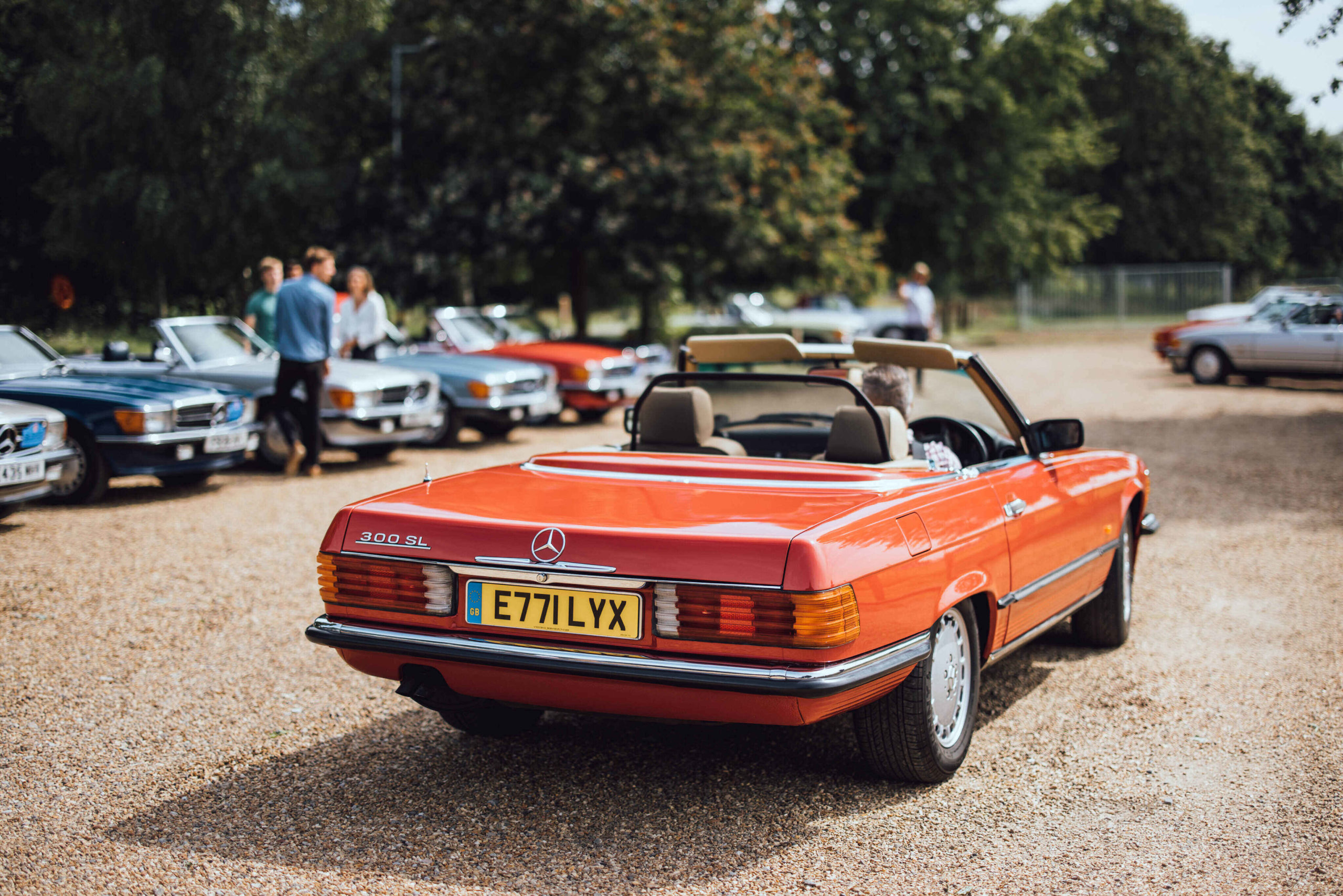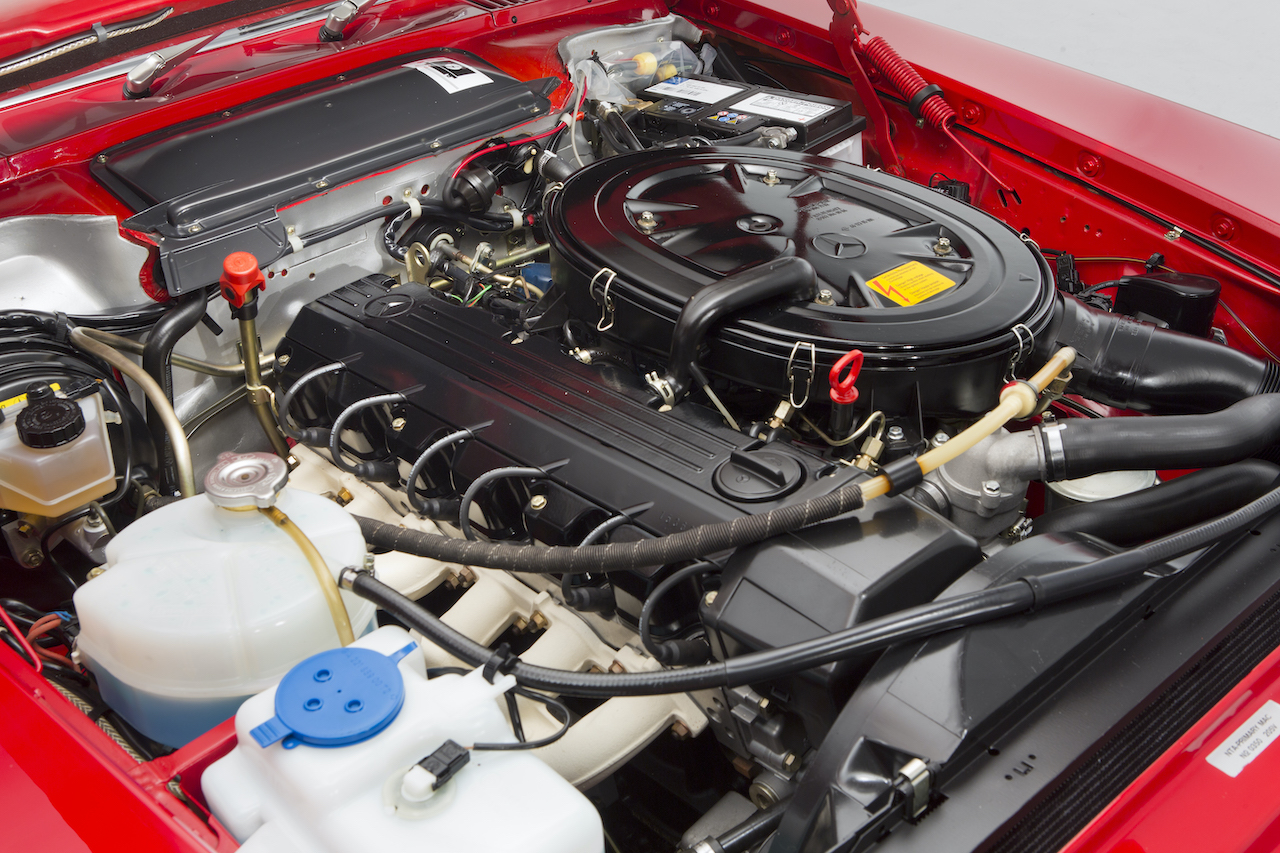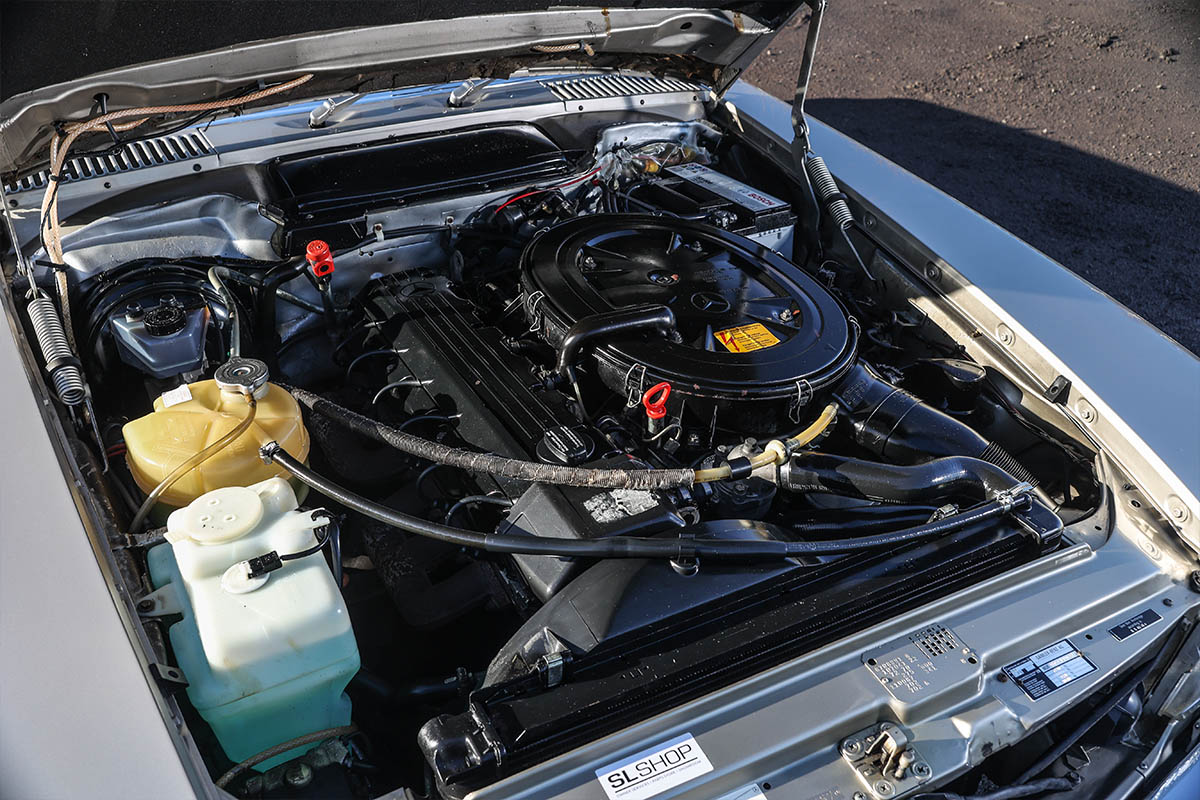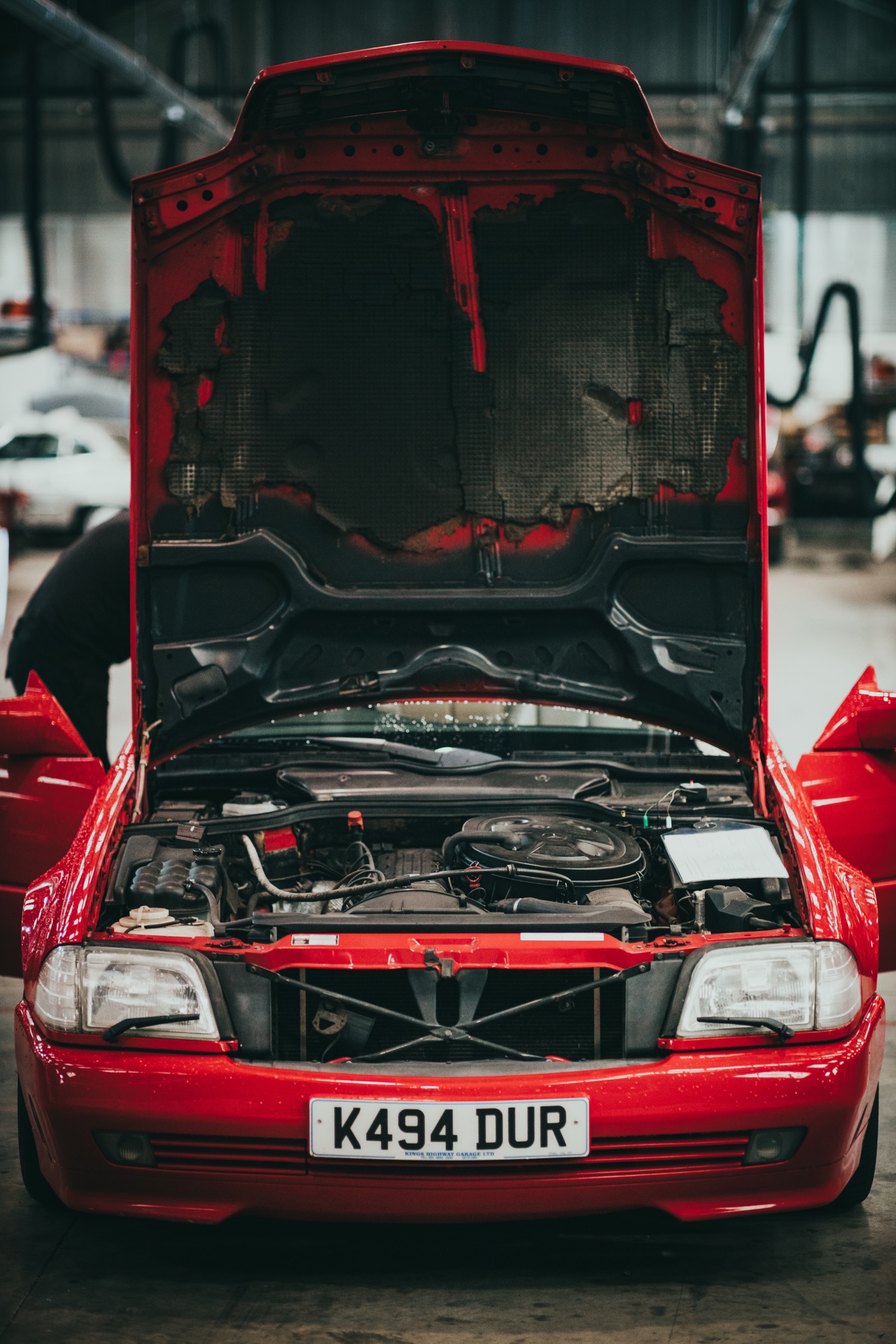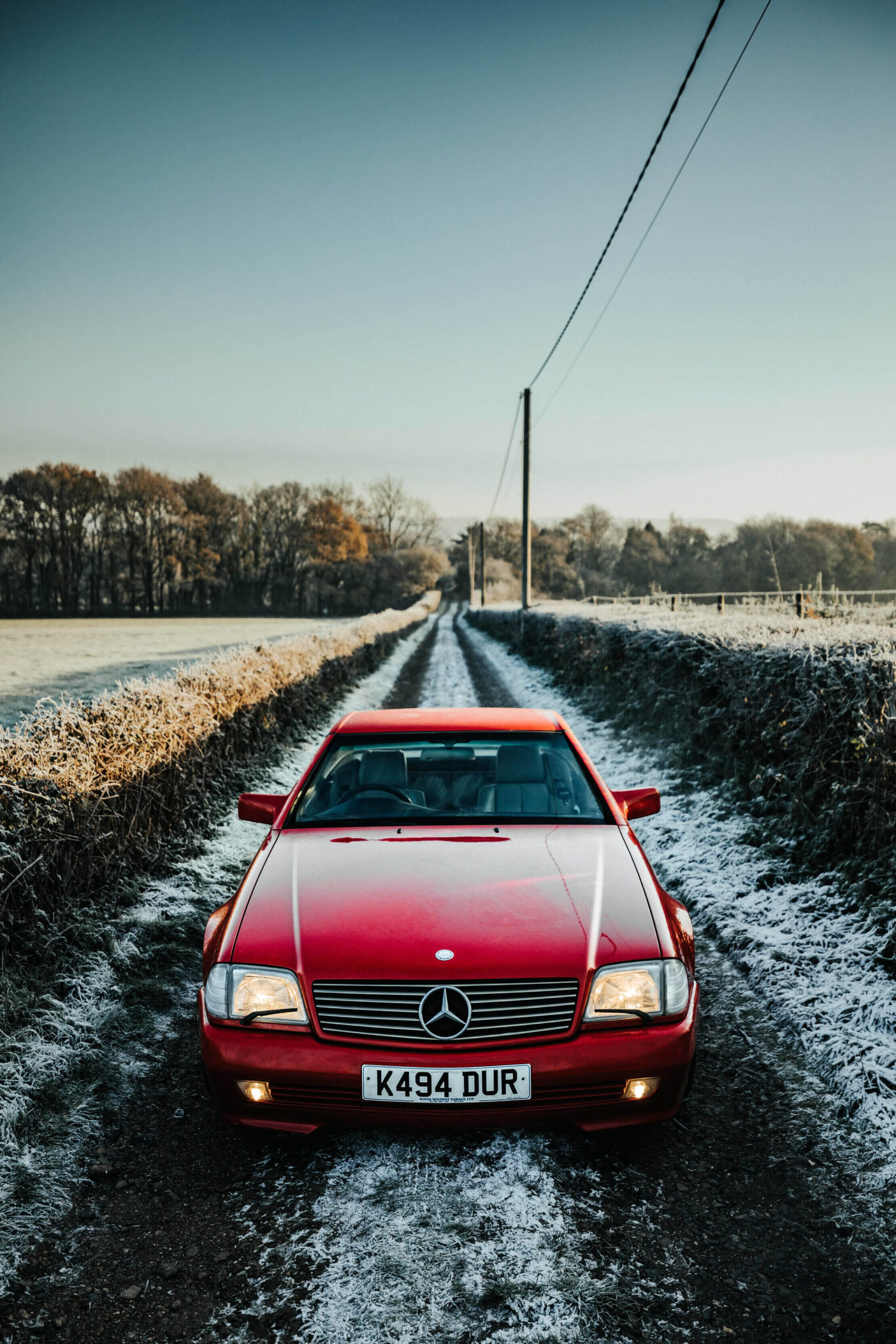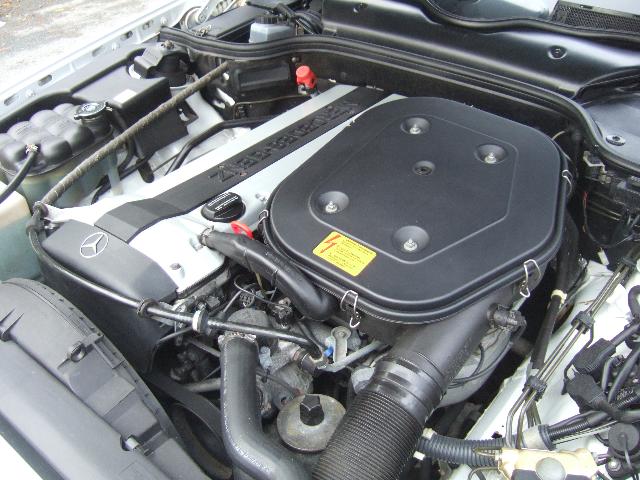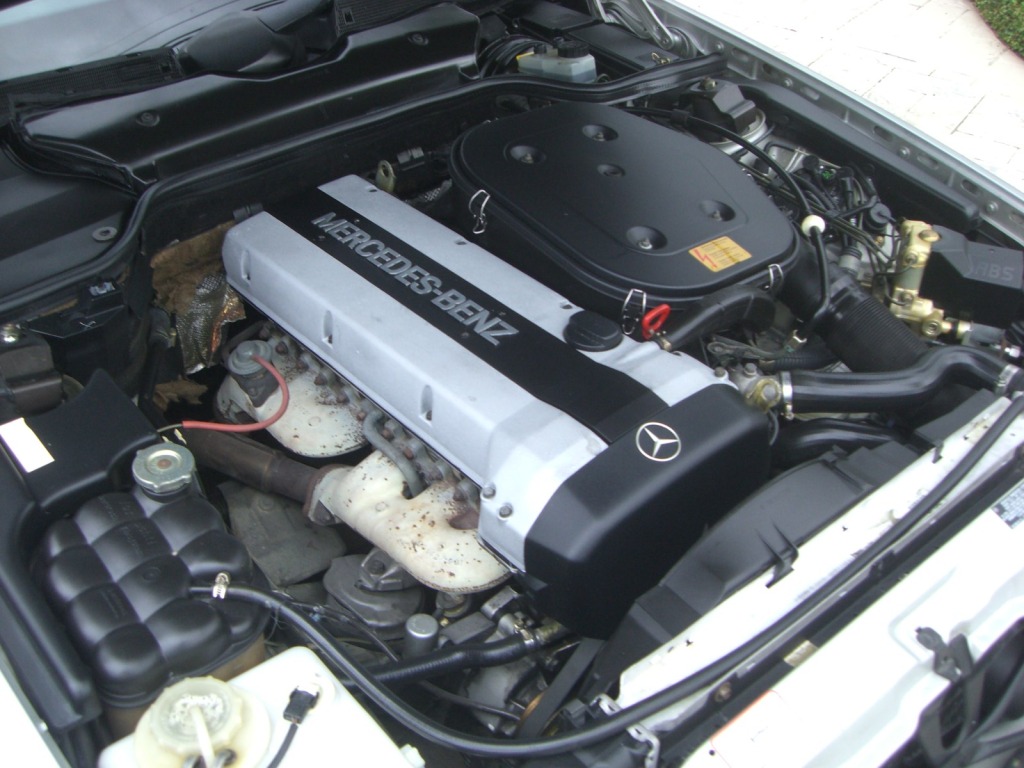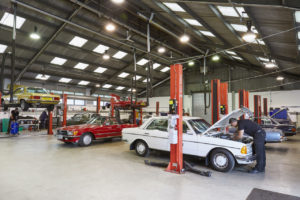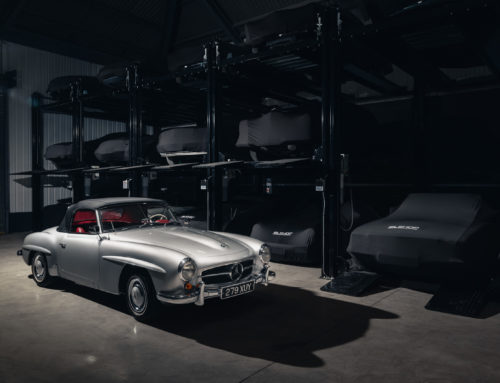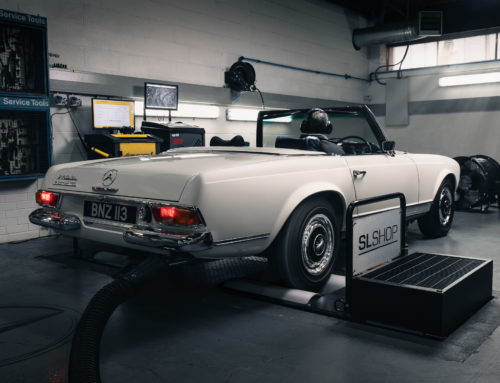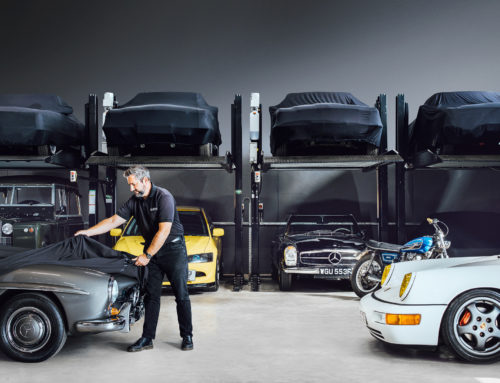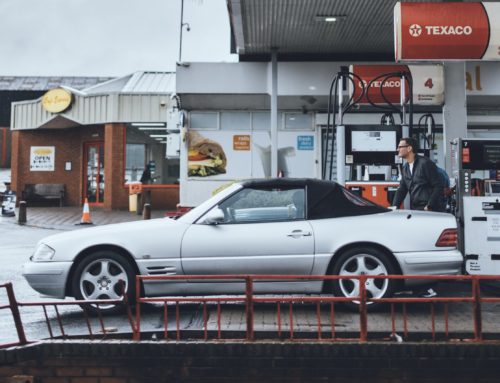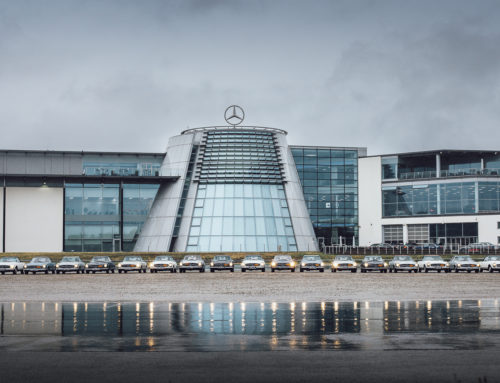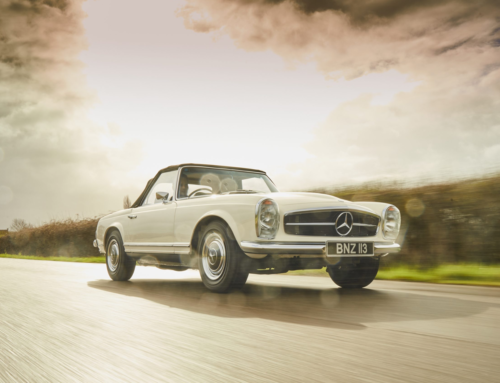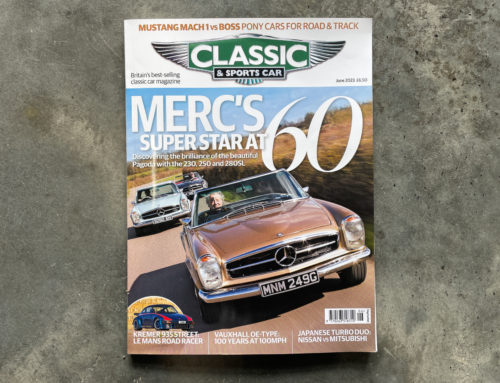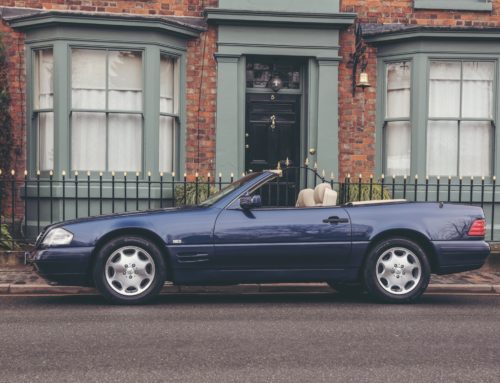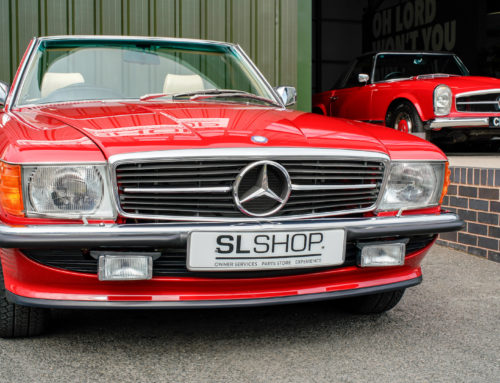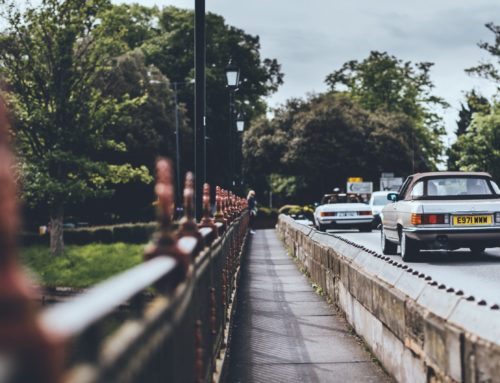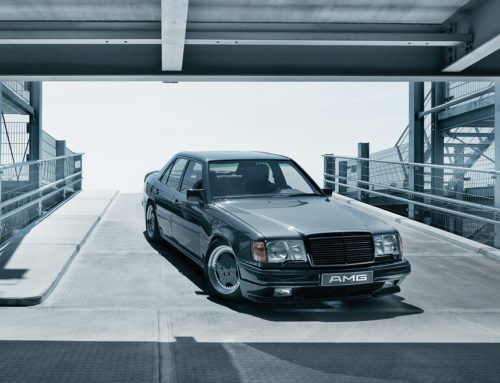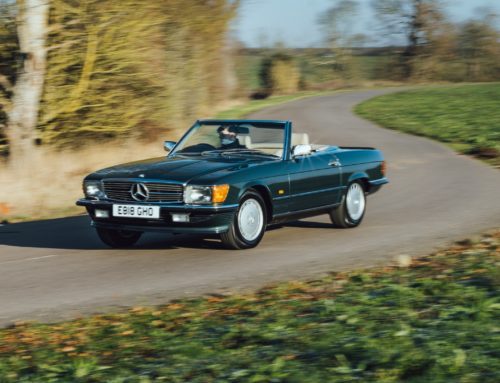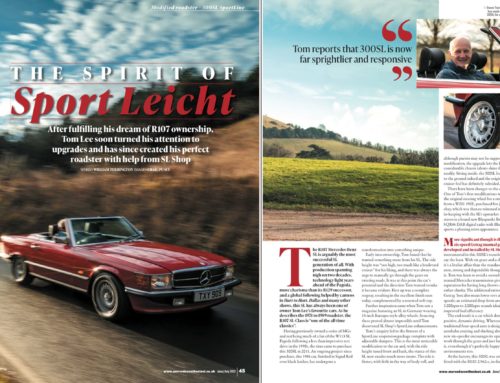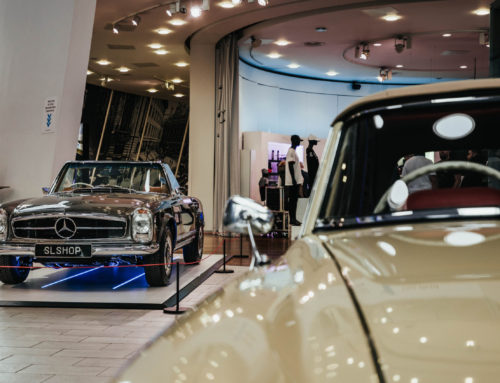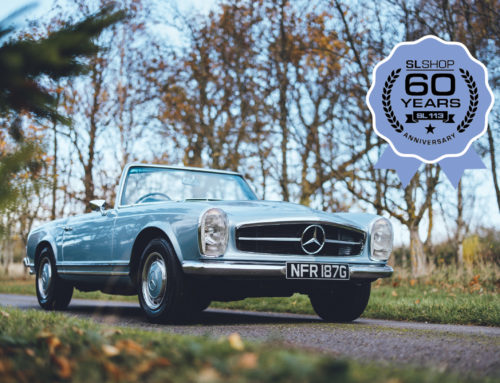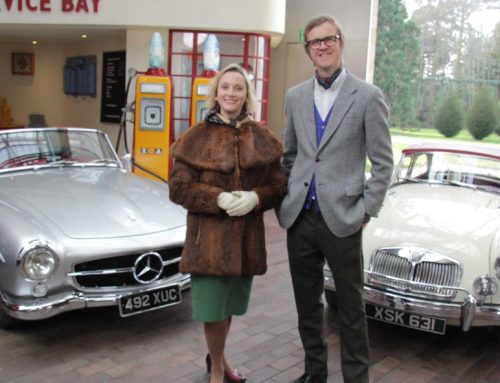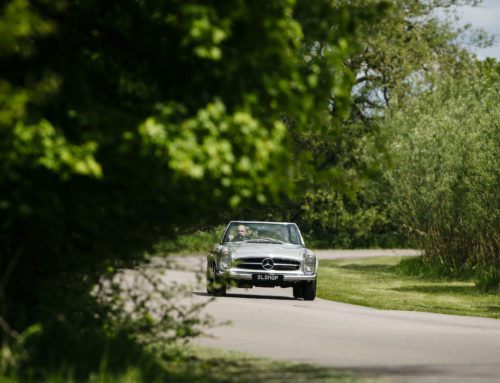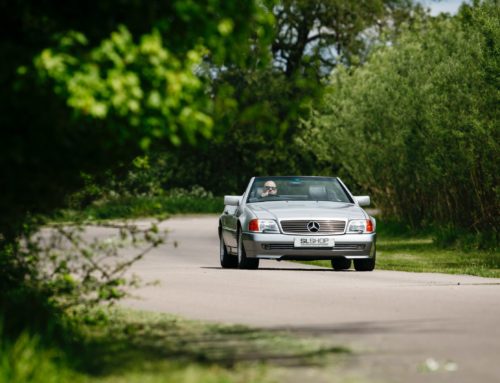The Mercedes 300SL engine is what gave this 5-figure alpha-numeric insignia the international reputation that it now holds. Without such an engine, it is could have been a very different story – the W194 may not have won in the competition space, and Max Hoffman may not have convinced Stuttgart to produce a road-going version in the form of the W198…
Fortunately for Mercedes Enthusiasts, and the marque, the 300SL engine was a cleverly thought out as the chassis and sleek body in which it was housed. This level of attention to engineering and design spring boarded the SL insignia and gave Mercedes-Benz a reputation for excellence. This article charts the development of the 300SL engine, outlining the characteristics of each different variation over the years.
The Original 300SL Engine:
In 1951, the W194 materialised as a force in the car design, engineering, and competition scene, made possibly by a carefully constructed variant of the M186 engine taken from the 300S tourer. MB boffs modified this 3.0 litre SOHC straight-six engine and assigned it the M194 code. The M194 featured a triple barrel Solex carburetor setup from the 300S, with a diagonal aluminium angled at 50 degrees to accommodate a larger intake and exhaust valves. The W194 engine produced 175hp and 207 N-M (153 lb. ft) of torque to enable a top speed of 160mph – a figure which Sir Stirling Moss was said to regularly hit.
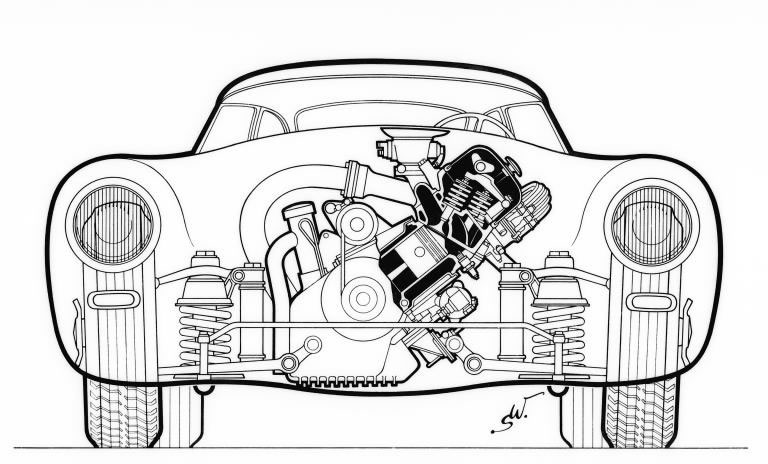
Following a massive success in the Carrera Panamerica, amongst other races, Stuttgart were convinced by Max Hoffman to build a road-going version of the W194 for mass consumption by the American elite. This one meeting held behind closed doors in 1953 would birth the most expensive to date. The 300SL engine would therefore take on a new construction.
The W198 300SL Gullwing Engine
In 1954, the newly manufactured 300SL Gullwing would incorporate the 3.0 litre water cooled overhead cam straight-six M198 would now feature Bosch fuel injection, with an aluminium head tilted at a 30-degree angle; again allowing room for a larger intake and exhaust valves.
The M198 300SL engine has a dry sump for greater oil distribution when cornering at higher speeds – an attribute that clearly showed Mercedes-Benz were keen to sell this vehicle to performance-junkies with the cash to spend. An additional option for those buying the 300SL (W198) was a sports camshaft with a 9:5:1 compression – this was free of charge. Again, a method to entice those with the appetites to driver faster.
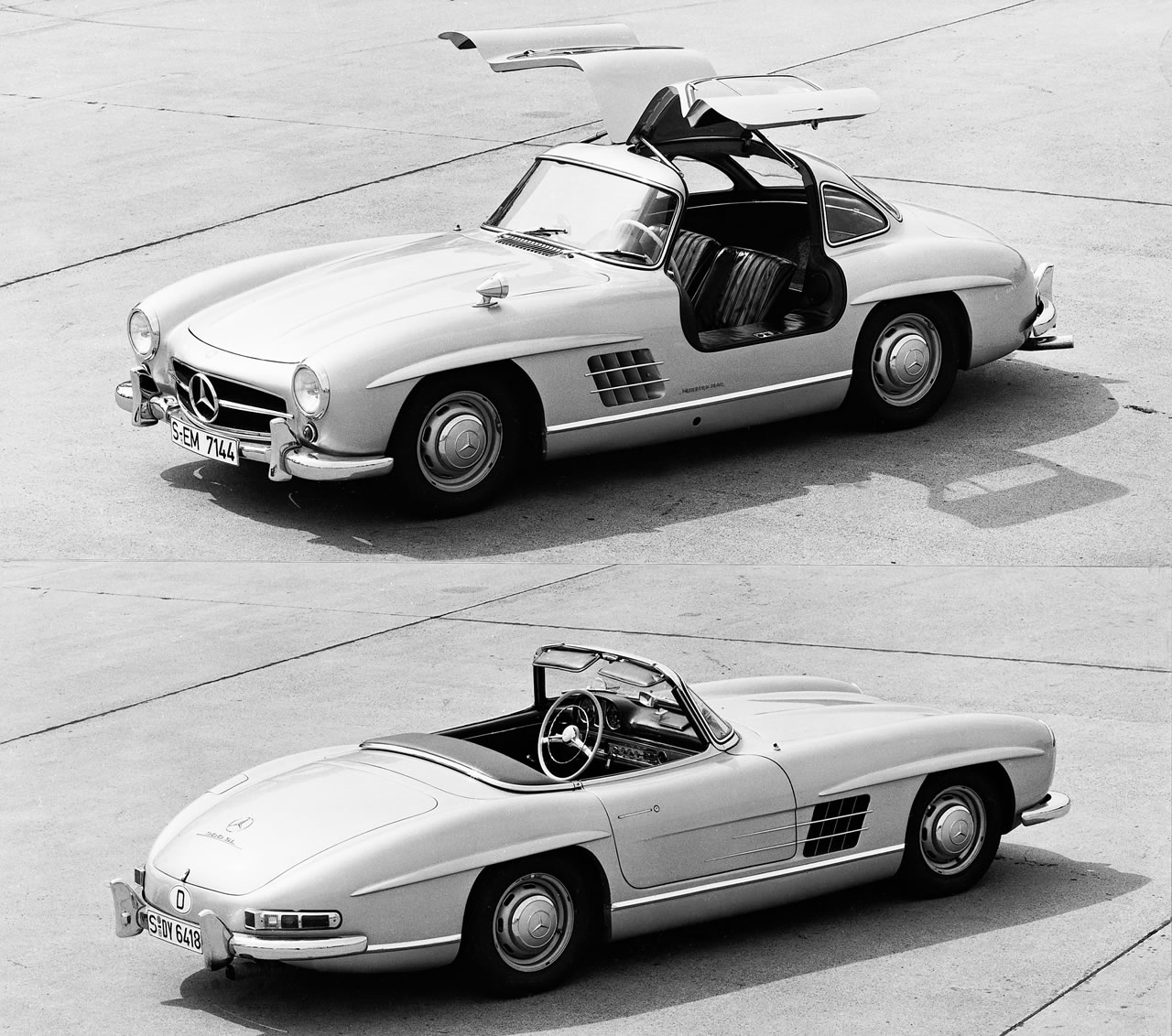
Power was a staggering 240hp and 294 N-M (217 lb.ft) in 1954. High numbers considering the post-war climate.
The 300SL insignia would then disappear until the early 1980s, making a comeback with the highly revered R107 300SL.
Mercedes 300SL M103 Engine
The R107 SL was introduced in 1971, taking the baton from the W113 Pagoda and running for a whole 18 years straight. This period of production saw a number of changes and modifications to existing engines, as well as the introduction of a number of new power plants. The range of engines offered was largely influenced by economic factors, with the 280SL being an economical variant responding to the Suez oil crisis in the 1970s.
It wasn’t until 1985 that the 300SL insignia returned to adorn the boot lid of the iconic roadster. The 300SL sported the new in-line six M103 unit, featuring a SOHC, two valves per cylinder and a wet sump. Power was a modest 185hp with 260 N-M (192 lb. ft) of torque. As we have pointed out in our Sportline features, the lighter characteristics of the 300SL make it the perfect platform for performance modifications.
This M103 300SL engine would make its way into a variety of different saloons and estates over the course of the late eighties and early nineties. Its final position in the limelight would be with the R129 SL, which replaced the R107 in 1989.
The Final Incarnation of the 300SL’s M103 Engine
As the final R107 facelift had been launched, designers within Mercedes-Benz had almost signed off the vehicle’s replacement, with the iconic R129 shape penned and millions of dollars in investment made to build the first roadster with an electrical folding roof. Not to mention, the safest roadster. The M103 would remain with the 300SL (R129) until 1993 when the M104 would take over the reigns.
But between 1989 and 1993 the 300SL engine would take two forms. The first was the same as that found in the R107 – the more modest M103 configuration. The second was the 300SL-24 which was a revamped 3.0 litre 24-valve DOHC in-line six-cylinder power plant producing 228hp. This meant that Mercedes-Benz could add a stiffer price of more than £50,000 when new -equivalent to £137,000 today. This 24-valve M104 unit features four valves per cylinder, KE-jetronic fuel injection, cylinder specific ignition timing, variable valve timing and under piston cooling jets.
- M104 300SL-24 Engine
- 300SL M103 Engine
Both the M103 and M104 would be replaced in 1993 by the SL280 and the SL320. We have since not seen the 300SL insignia attached to an SL model…
As the leading restorer and modifier of the Mercedes 300SL (R107 and R129), we focus on ensuring the mechanical integrity of the 300SL’s engine. Whether you have the M103 or the M104 variant, our team are experts at diagnosing and rectifying issues. Our team of trained craftsmen can even strip and restore your engine to factory specifications using the highest calibre replacement components from our on-site parts store.
If you have engine trouble or would like to modify your engine for performance gains, speak to our team today about your opportunity to secure the future value of your 300SL.
Share With Your Fellow Enthusiasts
The Mercedes 300SL engine is what gave this 5-figure alpha-numeric insignia the international reputation that it now holds. Without such an engine, it is could have been a very different story – the W194 may not have won in the competition space, and Max Hoffman may not have convinced Stuttgart to produce a road-going version in the form of the W198…
Fortunately for Mercedes Enthusiasts, and the marque, the 300SL engine was a cleverly thought out as the chassis and sleek body in which it was housed. This level of attention to engineering and design spring boarded the SL insignia and gave Mercedes-Benz a reputation for excellence. This article charts the development of the 300SL engine, outlining the characteristics of each different variation over the years.
The Original 300SL Engine:
In 1951, the W194 materialised as a force in the car design, engineering, and competition scene, made possibly by a carefully constructed variant of the M186 engine taken from the 300S tourer. MB boffs modified this 3.0 litre SOHC straight-six engine and assigned it the M194 code. The M194 featured a triple barrel Solex carburetor setup from the 300S, with a diagonal aluminium angled at 50 degrees to accommodate a larger intake and exhaust valves. The W194 engine produced 175hp and 207 N-M (153 lb. ft) of torque to enable a top speed of 160mph – a figure which Sir Stirling Moss was said to regularly hit.

Following a massive success in the Carrera Panamerica, amongst other races, Stuttgart were convinced by Max Hoffman to build a road-going version of the W194 for mass consumption by the American elite. This one meeting held behind closed doors in 1953 would birth the most expensive to date. The 300SL engine would therefore take on a new construction.
The W198 300SL Gullwing Engine
In 1954, the newly manufactured 300SL Gullwing would incorporate the 3.0 litre water cooled overhead cam straight-six M198 would now feature Bosch fuel injection, with an aluminium head tilted at a 30-degree angle; again allowing room for a larger intake and exhaust valves.
The M198 300SL engine has a dry sump for greater oil distribution when cornering at higher speeds – an attribute that clearly showed Mercedes-Benz were keen to sell this vehicle to performance-junkies with the cash to spend. An additional option for those buying the 300SL (W198) was a sports camshaft with a 9:5:1 compression – this was free of charge. Again, a method to entice those with the appetites to driver faster.

Power was a staggering 240hp and 294 N-M (217 lb.ft) in 1954. High numbers considering the post-war climate.
The 300SL insignia would then disappear until the early 1980s, making a comeback with the highly revered R107 300SL.
Mercedes 300SL M103 Engine
The R107 SL was introduced in 1971, taking the baton from the W113 Pagoda and running for a whole 18 years straight. This period of production saw a number of changes and modifications to existing engines, as well as the introduction of a number of new power plants. The range of engines offered was largely influenced by economic factors, with the 280SL being an economical variant responding to the Suez oil crisis in the 1970s.
It wasn’t until 1985 that the 300SL insignia returned to adorn the boot lid of the iconic roadster. The 300SL sported the new in-line six M103 unit, featuring a SOHC, two valves per cylinder and a wet sump. Power was a modest 185hp with 260 N-M (192 lb. ft) of torque. As we have pointed out in our Sportline features, the lighter characteristics of the 300SL make it the perfect platform for performance modifications.
This M103 300SL engine would make its way into a variety of different saloons and estates over the course of the late eighties and early nineties. Its final position in the limelight would be with the R129 SL, which replaced the R107 in 1989.
The Final Incarnation of the 300SL’s M103 Engine
As the final R107 facelift had been launched, designers within Mercedes-Benz had almost signed off the vehicle’s replacement, with the iconic R129 shape penned and millions of dollars in investment made to build the first roadster with an electrical folding roof. Not to mention, the safest roadster. The M103 would remain with the 300SL (R129) until 1993 when the M104 would take over the reigns.
But between 1989 and 1993 the 300SL engine would take two forms. The first was the same as that found in the R107 – the more modest M103 configuration. The second was the 300SL-24 which was a revamped 3.0 litre 24-valve DOHC in-line six-cylinder power plant producing 228hp. This meant that Mercedes-Benz could add a stiffer price of more than £50,000 when new -equivalent to £137,000 today. This 24-valve M104 unit features four valves per cylinder, KE-jetronic fuel injection, cylinder specific ignition timing, variable valve timing and under piston cooling jets.
- M104 300SL-24 Engine
- 300SL M103 Engine
Both the M103 and M104 would be replaced in 1993 by the SL280 and the SL320. We have since not seen the 300SL insignia attached to an SL model…
As the leading restorer and modifier of the Mercedes 300SL (R107 and R129), we focus on ensuring the mechanical integrity of the 300SL’s engine. Whether you have the M103 or the M104 variant, our team are experts at diagnosing and rectifying issues. Our team of trained craftsmen can even strip and restore your engine to factory specifications using the highest calibre replacement components from our on-site parts store.
If you have engine trouble or would like to modify your engine for performance gains, speak to our team today about your opportunity to secure the future value of your 300SL.
Share With Your Fellow Enthusiasts
More from Journal
CARE
THE ULTIMATE CERTIFIED SERVICING INVESTMENT PLAN
Your ownership journey matters to us, which is why we have created a simple certified servicing investment plan, tailored to your individual needs and aspirations.
Start investing today and our dedicated CARE team will work with you to increase the value and enjoyment you receive from your vehicle.

STAY IN TUNE WITH SLSHOP MOMENTS
As part of SLSHOP’s community of enthusiasts, you’ll be the first to hear about events and tours, key product offers, exciting stories from owners around the world and of course… our latest additions to the showroom. So, be the first to know and you might just sneak a car on your driveway or take your car’s condition to new heights with our exclusive replacement parts.
Or, visit SLSHOP Journal
